by Adela Lovric // Nov. 26, 2024
This article is part of our artist Spotlight Series
Around a decade ago, fresh from his studies in Greece, Stelios Kallinikou returned to Cyprus and teamed up with artist Peter Eramian to open Thkio Ppalies, a project space in Nicosia. Amid the economic crisis that followed the collapse of Cyprus’ banking system, cultural budgets were slashed, but low rents made it feasible to get a shared workspace as well as develop something new for the local artistic community. At the time, opportunities for young Cypriot artists were scarce, so Thkio Ppalies quickly became a vibrant platform for experimentation and exchange. Rooted in a spirit of collaboration, the space gradually evolved with a wider scope of projects and inclusion of international artists.
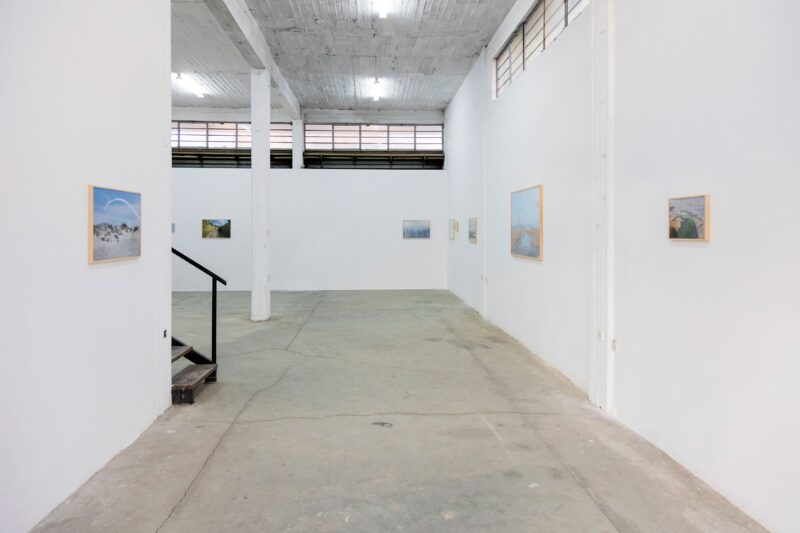
Stelios Kallinikou: ‘Flamingo Theatre,’ installation view, Thkio Ppalies, 2016 // Courtesy of the artist
While hosting exhibitions and events at Thkio Ppalies, Kallinikou—whose studio still occupies the upper floor of the building—has been nurturing his own practice in photography, video, sound, installation and performance. His work springs from a deep interest in Cyprus and steadily develops around its issues and complexities. Free from nationalistic sentiments, he seeks to unearth the universal threads woven through its history, politics and landscapes.

Stelios Kallinikou: ‘rcsaerh,’ exhibition view, Künstlerhaus Bethanien, 2019 // Courtesy of the artist
Kallinikou likes to call the island his extended studio. He wanders through its expanse equipped with a camera, occassionally navigating restrictions of the British military bases—a lingering remnant of Cyprus’ colonial past—and the UN buffer zone that slices through the island since the 1974 Turkish invasion. He never seeks permission to access and photograph these areas. To avoid suspicion if caught, he uses two memory cards in his camera—one for photos of flowers and other “benign” subjects to show the authorities, and the other for the prohibited shots of the contested landscape.
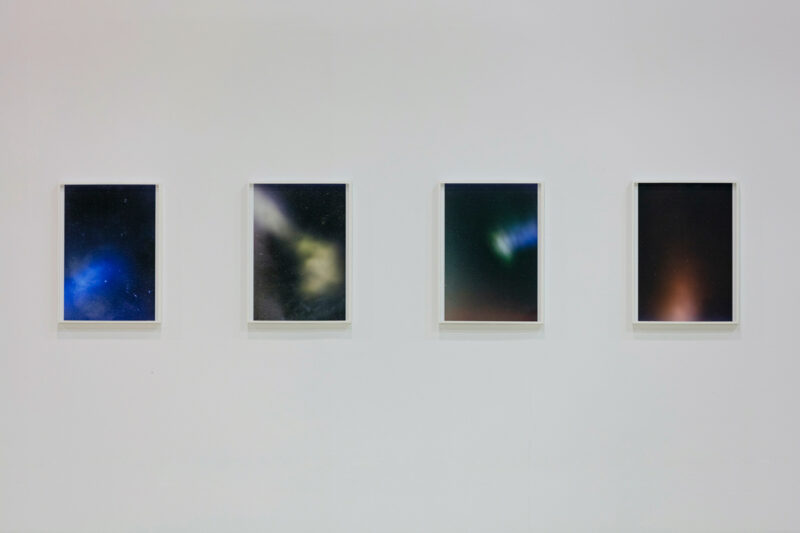
Stelios Kallinikou: ‘Star Gaze,’ 2019, installation view, NiMAC, Nicosia, 2019-20 // Courtesy of the artist
However, his interest is not in courting trouble (though it may arise), but rather in exploring the friction between his physical presence and the landscapes he comes across; of using his own body to understand himself, his community and the place he inhabits. This is perhaps most explicity visible in ‘Star Gaze’ (2019), a series of nighttime photographs taken atop Mount Olympus, Cyprus’ highest peak. In an unplanned moment of poetic clarity, the condensation of the artist’s breath became part of the images, like a ghostly presence roaming the starry sky. Kallinikou refers to this as the performativity of his photographic practice. Rather than beginning with a concept or theory, he trusts his instincts, allowing the process to reveal the artwork, and each artistic project to pave the way for the next.
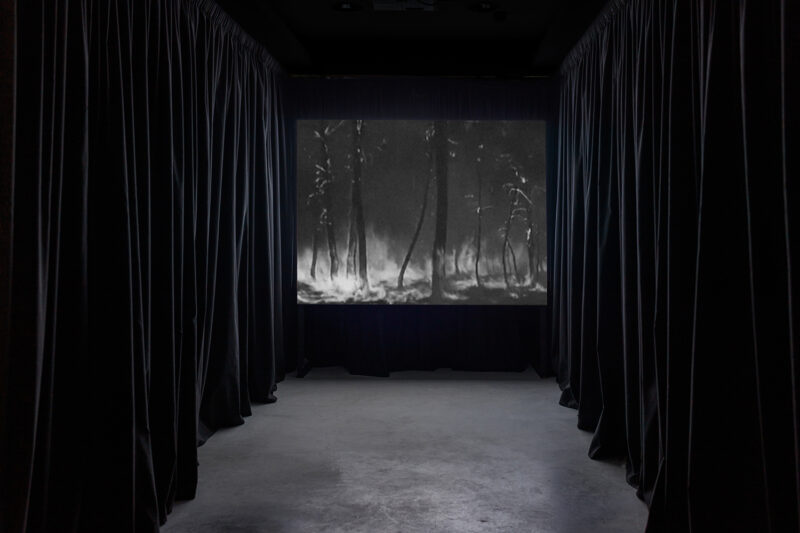
Stelios Kallinikou: ‘Flamingo Theater,’ 2019, installation view at SPEL, Nicosia, 2022-23 // Courtesy of the artist
The video work ‘Flamingo Theatre’ (2019)—a thematic continuation of the artist’s eponymous photographic series (2015)—poetically collages research material from the British Sovereign Base Area of Akrotiri. Views of biodiverse wetlands are juxtaposed with the coexisting military facilities. While the former is essential as a temporary sanctuary for migratory birds, the latter serves political ends as a surveillance point for developments across the eastern Mediterranean and the Middle East. Camouflaged as a nature photographer, Kallinikou captured the contrasting flows of movement—birds in migration alongside the relentless traffic of military aircraft and machinery.
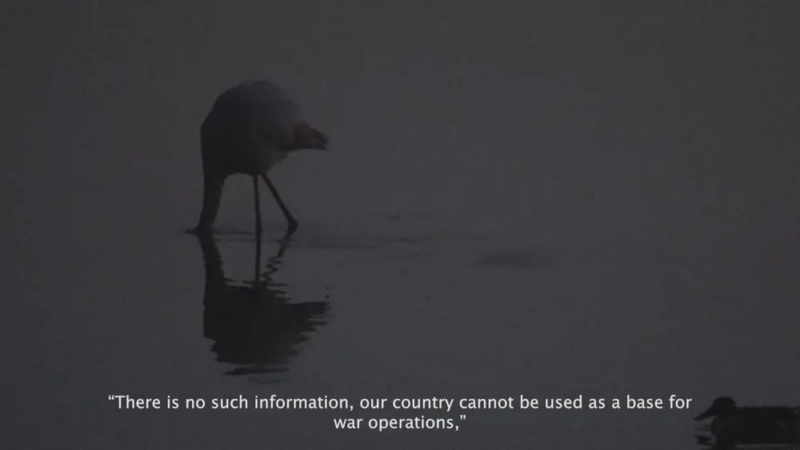
Stelios Kallinikou: ‘Bird Watching,’ 2023, video still // Courtesy of the artist
‘Bird Watching’ (2023), Kallinikou’s recent video work set in the same military base, can be seen as an extension of ‘Flamingo Theatre.’ Kallinikou created it amid reports of arms, forces and equipment from the UK and US being flown out of RAF Akrotiri to Israel. With this work, he continues to reflect on the interconnectedness of the suffering of people, animals and the environment with a renewed urgency. Through subdued imagery that evades hypervisuality of the ongoing atrocities, it shows (without showing) how, in the context of colonization and extinction, the natural world perishes in systemic ways.
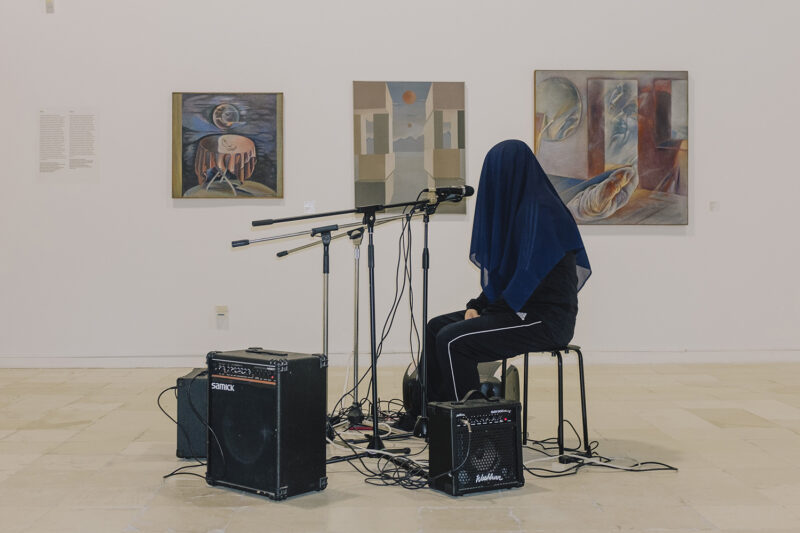
Stelios Kallinikou: ‘SKOMA,’ performance, NiMAC, 2024 // Courtesy of the artist
Earlier this year, at NiMAC in Nicosia, Kallinikou presented ‘SKOMA,’ his first live audio performance. Drawing from the opening song of the 1946 British colonial propaganda film ‘Cyprus is an Island’—where a Cypriot mourns their death and the meaning of dying in one’s homeland—he reimagined the melody as a mantric sound ritual, responding to the current ecological emergency. Draped in a dark scarf reminiscent of the cloth used behind large-format cameras, he stayed tethered to photography as a frame of reference while stepping into a new artistic territory. Acutely aware of photography’s ties to industrialization, imperialism and colonialism, he sought to evoke images sonically, reclaiming voice as a means of resistance in the contemporary postcolonial context.
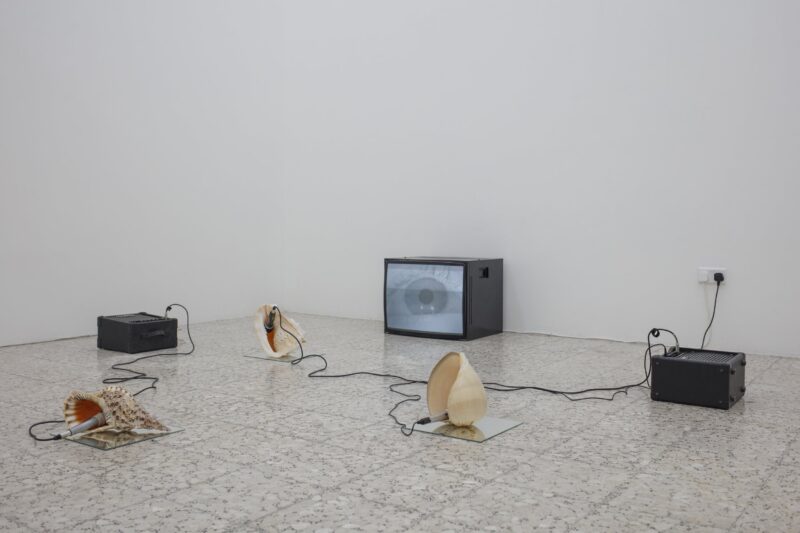
Stelios Kallinikou: ‘Calls and Songs,’ exhibition view, Eins Gallery, Limassol, 2024 // Courtesy of the artist
In the words of Gervaise Alexis Savvias, responding to a recent exhibition at Eins Gallery in Limassol, Kallinikou’s art is “a tender oscillation between stillness and spectacle.” Shifting between different media that intersect and inform one another, the artist traverses disparate realms—from politics to spirituality—enabling new perspectives through which notions of the environment and the body are interrogated and reimagined.























